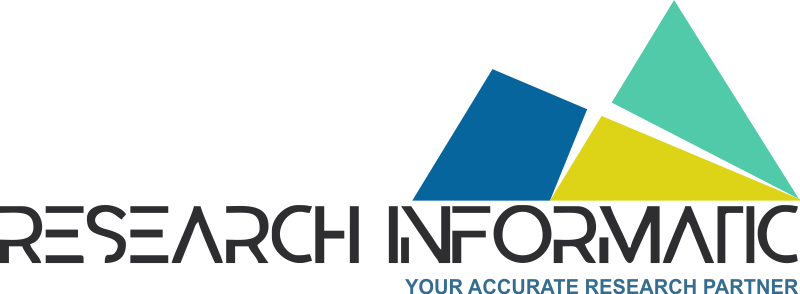
Algorithmic Trading Market Size, Share & Trends Analysis Report by Component (Solution, Services by Type (Stock Markets, Forex, ETF, Bonds, Cryptocurrencies, Others) By Deployment Mode (Cloud, On-Premise) By Traders Type (Institutional Investors, Long term Traders, Short Term Traders, Retail Investors) By Geography (North America, Europe, Asia-Pacific, South America, Row) Forecast till 2028
Categories: IT And Telecommunications | Format : 
Global Algorithmic Trading Market Overview
The Global Algorithmic Trading Market size is estimated to reach $ 31.8 billion by 2026, growing at a CAGR of 13.3% over the forecast period of 2021-2026. The method of executing orders using automated and pre-programmed trading instructions to account for variables such as price, time, and volume is known as Algorithmic trading. A set of instructions for solving a problem is known as an Algorithmic. Over time, computer Algorithmics send little chunks of the entire order to the market. Do-it-yourself Algorithmic trading has become increasingly popular in recent years. Hedge funds like Quantopian, for example, crowdsource Algorithmics from amateur programmers who compete to write the most lucrative code to win commissions.
Impact of COVID-19 on Algorithmic Trading Market:
Although there is minimal evidence of their application in Algorithmic trading systems, particularly under stressful scenarios like the present COVID-19 pandemic, the power of internet searches to explain and anticipate has been extensively studied and explored. Consequently, the relevant components are 18 COVID-19 search volumes, gold returns, and the VIX index, according to the recommended model with Google's delayed explanatory factors. The model employed Algorithmic trading approaches based on COVID-induced public fear.
Key Takeaways from Global Algorithmic Trading Market Report:
- Evaluate market potential through analyzing growth rates (CAGR %), Volume (Units), and Value ($M) data given at country level – for Component, type, deployment model, and traders type understand the different dynamics influencing the market – key driving factors, challenges, and hidden opportunities.
- Get in-depth insights on your competitor's performance – market shares, strategies, financial benchmarking, product benchmarking, SWOT, and more.
- Analyze the sales and distribution channels across key geographies to improve top-line revenues.
- Understand the industry supply chain with a deep dive on the value augmentation at each step to optimize value and bring efficiencies in your processes.
- Get a quick outlook on the market entropy – M&As, deals, partnerships, product launches of all key players for the past four years.
- Evaluate the supply-demand gaps, import-export statistics, and regulatory landscape for more than the top 20 countries globally for the market.
By Components, the market for Service is set to grow at the highest CAGR during the forecast period.
By Applications, Algorithmic Trading Market is segmented into Solutions and Services. Solution dominated the Algorithmic Trading Market in 2020. Demand is being driven by the advantages of Algorithmicic trading solutions, such as decreased transaction costs due to the lack of human involvement and quick and precise trade order placement. In addition, market participants are developing cutting-edge Algorithmic trading solutions to fulfill a wide range of customer needs. As a result, Service is the fastest-growing, with a CAGR of 14.2% during the forecast period 2021-2026.
The Asia Pacific to account for the largest market share during the forecast period
North America held the largest share of the Algorithmic Trading Market in 2020, with a global market share of 41.9%. Increased investments in trading technologies (such as blockchain), the rising presence of Algorithmic trading vendors, and growing government support for global trading are the key market development drivers throughout the forecast period. Furthermore, substantial technological developments and extensive deployment of Algorithmic trading in numerous applications such as banks and financial institutions across the area are projected to promote market expansion. As a result, Algorithmic trading accounts for 60-73 percent of all stock trading in the U.S. In addition, according to Select USA, the financial markets in the United States are the world's largest and most liquid.
The Asia Pacific is set to be the fastest-growing Algorithmic Trading Market owing to increasing investments by public and private sectors to increase their trading technologies.
Market Dynamics
Driver: Increasing demand for dependable, quick, and effective order execution is driving the Algorithmic Trading Market.
Big brokerage firms and institutional investors are increasingly resorting to Algorithmic trading to reduce trading costs. Since Algorithmic trading provides for simpler and faster order execution, which appeals to exchanges, it also helps investors and traders profit quickly from small price changes. As a result, the growing demand for successful trades is driving the growth of the Algorithmic trading business, which allows users to perform transactions quickly.
Challenge: Inadequate Risk Assessment Capabilities are restraining the market growth.
Biased logic, incorrect assumptions or judgments, ineffective modeling methodologies, coding mistakes, and recognizing misleading patterns in the training data are among the dangers that Algorithmic systems face. In addition, the incorrect output might result from a lack of technical rigor or conceptual soundness in creating training, testing, or validation. Bugs in trading Algorithmics, for example, cause irregular stock trading and price volatility, resulting in millions of dollars in losses in a matter of minutes.
Key Market Players
Key Players in the Global Algorithmic Trading Market consist of 63MOONS, Virtu Financial, Software AG, Refinitiv Ltd, MetaQuotes Software Corp, Symphony Fintech Solutions Pvt Ltd, Argo SE, Tata Consultancy Services, Algo Trader AG, Tethys, among Others.
Developments
In February 2020, NAGA, a publicly-traded German Fintech startup, said it had improved its entire trading experience by integrating the MetaTrader 5 platform. As a result, the brand has extended its multi-asset offering, enabling direct market access to equities listed on nine worldwide exchanges, including NASDAQ, NYSE, London Stock Exchange, HKE, Börse Frankfurt, and BME.
Report Coverage and Scope
The report "Global Algorithmic Trading Market" by Research Informatic covers an in-depth detailed analysis for the following segment covered under the scope.
By Component
- Solution
- Services
- By Type
- Stock Markets
- Forex
- ETF
- Bonds
- Cryptocurrencies
- Others
By Deployment Mode
- Cloud
- On-Premise
By Traders Type
- Institutional Investors
- Long term Traders
- Short Term Traders
- Retail Investors
By Geography
- North America
- Europe
- APAC
- RoW
Global Algorithmic Trading Market Growth, Trend and Forecast 2020-2028
Chapter 1 Algorithmic Trading Market Overview
1.1 Product Overview and Scope of Algorithmic Trading
1.2 Algorithmic Trading Market Segmentation by Type
1.2.1 Global Production Market Share of Algorithmic Trading by Type in 2019
1.2.1 Type 1
1.2.2 Type 2
1.2.3 Type 3
1.3 Algorithmic Trading Market Segmentation by Application
1.3.1 Algorithmic Trading Consumption Market Share by Application in 2019
1.3.2 Application 1
1.3.3 Application 2
1.3.4 Application 3
1.4 Algorithmic Trading Market Segmentation by Regions
1.4.1 North America
1.4.2 China
1.4.3 Europe
1.4.4 Southeast Asia
1.4.5 Japan
1.4.6 India
1.5 Global Market Size (Value) of Algorithmic Trading (2014-2028)
Chapter 2 Global Economic Impact on Algorithmic Trading Industry
2.1 Global Macroeconomic Environment Analysis
2.1.1 Global Macroeconomic Analysis
2.1.2 Global Macroeconomic Environment Development Trend
2.2 Global Macroeconomic Environment Analysis by Regions
Chapter 3 Global Algorithmic Trading Market Competition by Manufacturers
3.1 Global Algorithmic Trading Production and Share by Manufacturers (2019 and 2019)
3.2 Global Algorithmic Trading Revenue and Share by Manufacturers (2019 and 2019)
3.3 Global Algorithmic Trading Average Price by Manufacturers (2019 and 2019)
3.4 Manufacturers Algorithmic Trading Manufacturing Base Distribution, Production Area and Product Type
3.5 Algorithmic Trading Market Competitive Situation and Trends
3.5.1 Algorithmic Trading Market Concentration Rate
3.5.2 Algorithmic Trading Market Share of Top 3 and Top 5 Manufacturers
3.5.3 Mergers & Acquisitions, Expansion
Chapter 4 Global Algorithmic Trading Production, Revenue (Value) by Region (2014-2020)
4.1 Global Algorithmic Trading Production by Region (2014-2020)
4.2 Global Algorithmic Trading Production Market Share by Region (2014-2020)
4.3 Global Algorithmic Trading Revenue (Value) and Market Share by Region (2014-2020)
4.4 Global Algorithmic Trading Production, Revenue, Price and Gross Margin (2014-2020)
4.5 North America Algorithmic Trading Production, Revenue, Price and Gross Margin (2014-2020)
4.6 Europe Algorithmic Trading Production, Revenue, Price and Gross Margin (2014-2020)
4.7 China Algorithmic Trading Production, Revenue, Price and Gross Margin (2014-2020)
4.8 Japan Algorithmic Trading Production, Revenue, Price and Gross Margin (2014-2020)
4.9 Southeast Asia Algorithmic Trading Production, Revenue, Price and Gross Margin (2014-2020)
4.10 India Algorithmic Trading Production, Revenue, Price and Gross Margin (2014-2020)
Chapter 5 Global Algorithmic Trading Supply (Production), Consumption, Export, Import by Regions (2014-2020)
5.1 Global Algorithmic Trading Consumption by Regions (2014-2020)
5.2 North America Algorithmic Trading Production, Consumption, Export, Import by Regions (2014-2020)
5.3 Europe Algorithmic Trading Production, Consumption, Export, Import by Regions (2014-2020)
5.4 China Algorithmic Trading Production, Consumption, Export, Import by Regions (2014-2020)
5.5 Japan Algorithmic Trading Production, Consumption, Export, Import by Regions (2014-2020)
5.6 Southeast Asia Algorithmic Trading Production, Consumption, Export, Import by Regions (2014-2020)
5.7 India Algorithmic Trading Production, Consumption, Export, Import by Regions (2014-2020)
Chapter 6 Global Algorithmic Trading Production, Revenue (Value), Price Trend by Type
6.1 Global Algorithmic Trading Production and Market Share by Type (2014-2020)
6.2 Global Algorithmic Trading Revenue and Market Share by Type (2014-2020)
6.3 Global Algorithmic Trading Price by Type (2014-2020)
6.4 Global Algorithmic Trading Production Growth by Type (2014-2020)
Chapter 7 Global Algorithmic Trading Market Analysis by Application
7.1 Global Algorithmic Trading Consumption and Market Share by Application (2014-2020)
7.2 Global Algorithmic Trading Consumption Growth Rate by Application (2014-2020)
7.3 Market Drivers and Opportunities
7.3.1 Potential Applications
7.3.2 Emerging Markets/Countries
Chapter 8 Algorithmic Trading Manufacturing Cost Analysis
8.1 Algorithmic Trading Key Raw Materials Analysis
8.1.1 Key Raw Materials
8.1.2 Price Trend of Key Raw Materials
8.1.3 Key Suppliers of Raw Materials
8.1.4 Market Concentration Rate of Raw Materials
8.2 Proportion of Manufacturing Cost Structure
8.2.1 Raw Materials
8.2.2 Labor Cost
8.2.3 Manufacturing Expenses
8.3 Manufacturing Process Analysis of Algorithmic Trading
Chapter 9 Industrial Chain, Sourcing Strategy and Downstream Buyers
9.1 Algorithmic Trading Industrial Chain Analysis
9.2 Upstream Raw Materials Sourcing
9.3 Raw Materials Sources of Algorithmic Trading Major Manufacturers in 2019
9.4 Downstream Buyers
Chapter 10 Marketing Strategy Analysis, Distributors/Traders
10.1 Marketing Channel
10.1.1 Direct Marketing
10.1.2 Indirect Marketing
10.1.3 Marketing Channel Development Trend
10.2 Market Positioning
10.2.1 Pricing Strategy
10.2.2 Brand Strategy
10.2.3 Target Client
10.3 Distributors/Traders List
Chapter 11 Market Effect Factors Analysis
11.1 Technology Progress/Risk
11.1.1 Substitutes Threat
11.1.2 Technology Progress in Related Industry
11.2 Consumer Needs/Customer Preference Change
11.3 Economic/Political Environmental Change
Chapter 12 Global Algorithmic Trading Market Forecast (2020-2028)
12.1 Global Algorithmic Trading Production, Revenue Forecast (2020-2028)
12.2 Global Algorithmic Trading Production, Consumption Forecast by Regions (2020-2028)
12.3 Global Algorithmic Trading Production Forecast by Type (2020-2028)
12.4 Global Algorithmic Trading Consumption Forecast by Application (2020-2028)
12.5 Algorithmic Trading Price Forecast (2020-2028)
Chapter 13 Appendix
FAQ

Published On:May 2022
Base Year:2021
Historical Data:2018 - 2020
No of Pages:250
Choose License Type
Personalize this Research
- Market Size and Share from 2016 - 2027
- Expected Market Growth Until 2027
- COVID-19 Impact assessment on the market
- Market Dynamics and Impact Analysis
- Segment and region that will drive or lead the market growth and why
- Industry activity comprising Mergers, Acquisitions, Expansion, etc.
- Comprehensive Mapping of the Competitive Landscape
- In-depth analysis of key sustainability strategies adopted by market players
- Global and regional market trends – Current and Future
- Value Chain Analysis
- Porters Five Forces Analysis
- Historical and Current Product Pricing
- Country Cross-Segment Analysis
- Company Profiling
- Player Comparison Matrix
IT And Telecommunications Clients
Algorithmic Trading Market Size, Share & Trends An...
RD Code : IT22



